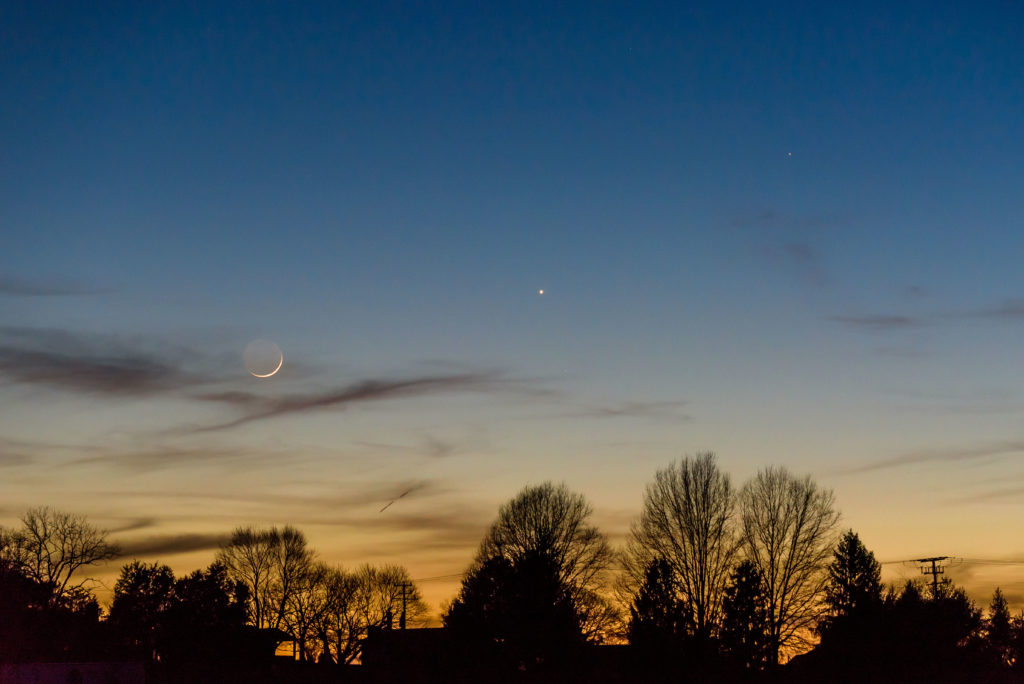 The last Sunday of northern winter in 2018 brought a clear and dry night for stargazing in the Washington, D.C. area. In this image, taken from The Plains, Virginia, shows a slender crescent Moon just 3% illuminated by the Sun’s light. The Moon is joined by the two inner planets Venus (brighter, at center) and Mercury (upper right). Mercury has just passed its greatest eastern elongation and will now begin quickly moving back toward the Sun. Venus moves in the opposite direction, more languorously, as it slowly gets higher and brighter in the coming weeks.
The last Sunday of northern winter in 2018 brought a clear and dry night for stargazing in the Washington, D.C. area. In this image, taken from The Plains, Virginia, shows a slender crescent Moon just 3% illuminated by the Sun’s light. The Moon is joined by the two inner planets Venus (brighter, at center) and Mercury (upper right). Mercury has just passed its greatest eastern elongation and will now begin quickly moving back toward the Sun. Venus moves in the opposite direction, more languorously, as it slowly gets higher and brighter in the coming weeks.
Share This:

 The planet Venus is the third brightest object in our skies after the Sun and the Moon. Known since the first humans turned their gaze to the sky, the striking appearance of Venus compelled the ancient Greeks and Romans to name the planet after the goddess of love and beauty. Other cultures, including the Sumerians and the Pawnee in North America also linked this brilliant planet to objects of feminine beauty. The ancient Mayans had a particular interest in Venus and built an observatory at Chichen Itza to, among other things, precisely measure the position of the planet, and some aspects of the Mayan calendar are based on the motions of Venus. While Venus reveals little detail in a telescope, it grows and shrinks and goes through a series of phases similar to the Moon, and comes closer to Earth than any other planet. Here’s a little background on the planet Venus and a few tips to help you see the planet for yourself and understand its apparitions and motion in our skies
The planet Venus is the third brightest object in our skies after the Sun and the Moon. Known since the first humans turned their gaze to the sky, the striking appearance of Venus compelled the ancient Greeks and Romans to name the planet after the goddess of love and beauty. Other cultures, including the Sumerians and the Pawnee in North America also linked this brilliant planet to objects of feminine beauty. The ancient Mayans had a particular interest in Venus and built an observatory at Chichen Itza to, among other things, precisely measure the position of the planet, and some aspects of the Mayan calendar are based on the motions of Venus. While Venus reveals little detail in a telescope, it grows and shrinks and goes through a series of phases similar to the Moon, and comes closer to Earth than any other planet. Here’s a little background on the planet Venus and a few tips to help you see the planet for yourself and understand its apparitions and motion in our skies 
